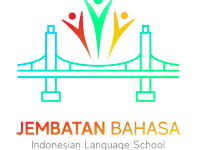How did the Indonesian Language form? If you wonder how the Indonesian language has so much similarity to other languages, it is because this language was formed through some notable events in history, involving Asian and European countries.
The Origin
The Indonesian language has its roots in the 7th century, as a result of the discovery of some ancient inscriptions. These inscriptions were written in the Ancient Malay language, and were made during the reigns of the Sriwijaya and Malayu Kingdoms, both of which were located in Sumatra. This language was needed as a trade language, as the two kingdoms were the center of trade for the surrounding islands. The people from each island spoke different languages, and thus they communicated using Ancient Malay.
Arabic and Persian Influence
In the 12th century, the Arabic and Persian trade entered the archipelago. They brought Islamic influence to the locals while dominating trade. However, due to the new trading system, Sriwijaya became superior to the other kingdoms. The Malayu Kingdom then migrated to the Malaka Peninsula to build their Islamic kingdom. Here, the Malayu Kingdom had a good hold amongst the Arabic and Persian merchants.
Sanskrit and Javanese Influence
With the influence of Arabic and Persian vocabularies, the Ancient Malay language developed into Classic Malay. This language was used in the 15th century and had two different dialects. The people of the Sriwijaya Kingdom spoke in the Sumatra Malay dialect, while those in the Malayu Kingdom spoke in Malayan dialect. This difference occurred after the Malayu Kingdom became an Islamic kingdom. Since most of the Arabic and Persian merchants migrated to Malaka, the Malayan dialect was strongly influenced by Arabic and Persian vocabularies. On the other hand, Sriwijaya was not dominated by foreign cultures; instead, it was influenced by Sanskrit and Javanese languages which were considered local languages.
Portuguese Dominance
In the 16th century, the Portuguese came to dominate the trade of spices. They brought European culture along with their language. Due to their dominance in the trading system, the Sumatra Malay dialect was influenced by the Portuguese vocabulary. Sumatra Malay was slowly transformed into a whole new language known as trading Malay. Hence people in Malaka (what we now call Malaysia) spoke classic Malay, but they also spoke trading Malay to do international trade.
Thus in the 17th century, the Sumatra Malay dialect became a lingua franca. It was spoken by most of the countries in Southeast Asia as well as some countries in East Asia. It became one of the main trading languages in Asia besides Mandarin and Arabic, and this continued until the 19th century.
Colonialism
Colonialism took place in the 20th century. Indonesia was first colonized by the Dutch, and subsequently by the Japanese. During these eras of colonization, many words from the Dutch and Japanese vocabularies entered the Malay lexicon. It was also influenced by English and Mandarin, after which it turned into what we now call the Indonesian language.
On the other hand, classic Malay, which was spoken in the Malay Peninsula, was not influenced by Dutch, Portuguese, Sanskrit, Javanese, or Japanese. Instead, it was mainly influenced by Arabic, Persian, Tagalog, Mandarin, and English. Therefore, although Malay and Indonesian languages have similarities in structure, they are very different in their dialect, idioms, and daily expressions. Most importantly, although Malay was the origin of Indonesian language, Malaysian wasn’t the ancestor of Indonesians. Because the Malay language itself actually came from Sumatra, of the main islands of Indonesia.
Modern Indonesian
Indonesian language was formalized on October 28, 1928. However, at the time, it still used the Dutch spelling, or the Van Ophuijsen spelling. Then in 1945, the language developed further into much simpler spelling, along with the independence of the country. In 1972, the government refined the Indonesian spelling based on the EYD (Ejaan Yang Disempurnakan) standard. This is the modern Indonesian that we use until today.
This ends the short history on the origin of the Indonesian language. If you are interested in learning modern-day Indonesian, get in touch for the best courses in Bali.
